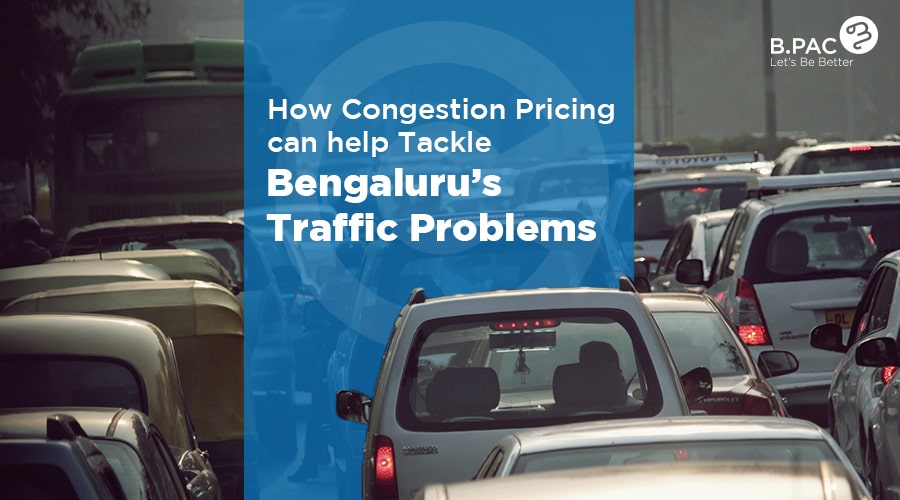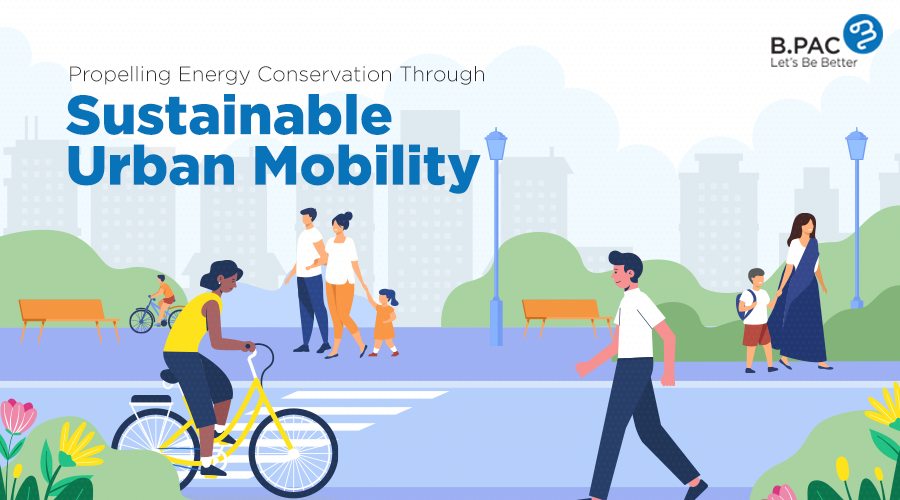Bengaluru has been officially declared as the most congested city in the world, as per the TomTom Traffic Index report in January 2020. The report says, “Commuters in Bengaluru spend an extra 243 hours and 71% travel time stuck in the traffic.” 1 According to the latest report by the specialist in geolocation technologies, TomTom, revealed that Bengaluru’s city centre was the second slowest to drive through in the world in 2022, with about half an hour of travel time by road to cover 10 km.
Externalities of the congestion:
Urban mobility, with increasing private vehicles, impacts society in different forms of externalities such as climate change, deteriorating health of commuters and inefficiency. It is a significant contributor to GHG emissions, and there is ample scientific evidence on how carbon emissions are worsening the global climate. It seems impossible to address the climate crisis without reducing the GHG emissions from the transport sector as transportation alone contributes to 23% of global carbon emissions1. Energy use and GHG emissions from the land transport sector are expected to increase by nearly 50% by 2030 when compared with 2009 figures and are likely to rise to 80% by 2050. Transport is a significant source of emissions in Bengaluru with vehicular exhaust and on road-dust together accounting for 56% and 70% of the total PM2.5 and PM10 emissions respectively.
With a steep rise in GHG emissions, its impact on commuters’ health is equally under threat because of their toxic exposure. Various studies identified that exposure to vehicular exhaust is one of the leading causes of Asthma in children which persistently increased from 20% in 1994 to 72.5% in 2009. It is also observed that the polluted air is the reason for other health issues like reduced lung functioning, coughing and wheezing. The poor conditions of congested Bengaluru roads leave the commuters with horrible travel experience, impacting directly on the efficiency and economy of the city. A study reported that 70% of BMTC users travel for more than 1 hour to reach their destination. The Revised Master Plan 2031 said that more than 10 million citizens are losing 600 million hours annually in the traffic which translates to Rs.3700 crores including the fuel losses as more than 2.5 litres of fuel gets wasted per hour every day because of the reduced vehicle speed to 11 kmph.
Pricing the congestion:
Around the world, few cities like London, Stockholm, Singapore can deal effectively with congestion issues. Their success stories of implementing Congestion Pricing (C.P) can be observed in their increased traffic speeds and public transit funding and reduced health issues related to vehicular emissions. It is evident through different studies like the study conducted on Stockholm’s air quality after implementing C.P observed that there could be a decrease in 5 to 10% pollution. Bruce Schaller says that- “ C.P forces people to consider the full cost of driving. As of now, only a fraction of the costs associated with car traffic, such as parking fees or fuel taxes, is paid. C.P accounts for how a person’s decision to drive affects other people. These externalities include crashes with pedestrians, bicyclists, and other vehicles, time lost stuck in traffic, and environmental and health problems.” So, he says it is required to price the external costs created in the congested environment as this would allow reaching an optimal outcome or at least a step closer to that. (as per the economic theory)
Positive effects of the lockdown in Bengaluru:
With the widespread of the COVID-19 pandemic and subsequent guidelines of lockdown and social distancing norms, people living in urban areas have undergone different changes in their lives. Even the people living in Bengaluru had been experiencing different phases of the spread of the disease. In the early months of the pandemic, the city had witnessed the betterment of the air quality. A report released by the Centre for Research on Energy and Clean Air (CREA) analyzed the data of the emissions, collected by the Bengaluru Health Air Coalition. It states that there is a dip of approximately 28% in PM 2.5 levels and 40% in NO2 levels on an average during the first 45 days of the lockdown, compared to 45 days before the lockdown. This blessing in disguise is possible because of the steep decline in vehicular emissions as there was an almost complete halt of vehicle movement.
The report also denotes that lockdown has brought down the vehicular movement and associated suspension of dust, which cumulatively form the major source of the emissions in Bengaluru.
Congestion pricing (C.P) in Bengaluru:
C.P is a method of charging road users to regulate the demand by increasing the cost of the road. The congestion charge is quite a different concept from the vehicle taxes and tolls that are being implemented in India. Vehicle taxes are paid at the time of the purchase or annually according to the size and type of vehicle. The toll charge is collected from the road users to allow them to use an upgraded road which helps in commuting easily and fast.
According to the Mint’s study, in urban areas, it is observed that eight out of the ten fastest arterial roads are the toll roads as they limit congestion and increase vehicle speeds by controlling the access. But, the urban mobility experts opine that access controlled roads and expressways in India, i.e. toll roads are not a sustainable solution for solving the issue of congestion as even those roads capacity is being crossed by the demand rise of the private vehicles. In Bengaluru, we can observe this in the case of the Electronic city elevated expressway as the additional and widened roads are also eventually filled with private vehicles. C.P is a suggested effective way rather than only tolled expressways as a road user contributing to the additional congestion will pay for the congestion charge for using a congested road.
It should be noted that C.P, along with reducing congestion and air pollution, also achieves the goal of equitable transportation. It is because though a road is a common good, the majority of the roads are filled up with private vehicles can be a method for channeling the benefits of the C.P for the development of the public transit modes and the required infrastructure. In a way to solve the issue of congestion in Bengaluru, it is thus required to regulate the private vehicle users by charging them, mainly for accounting their externalities. C.P, by disincentivizing the private vehicle users, with its channelised fund will redistribute the benefits to the other mode users. But, a good strategy, political will and commitment to C.P are required in Bengaluru. Along with that, the public acceptance for paying the congestion charges should be equally considered. As per the Ola Mobility Institute’s report, the features for a good pricing strategy are fairness, understandable norms and easily enforceable, determinable charges and customisable as per the requirements.
Challenges for implementing Congestion Pricing (C.P) in Bengaluru:
The concept of C.P can be viable in Bengaluru only if its alternate modes of transport (other than private vehicles) are reliable. It is because, without the availability of efficient, safe, accessible and reliable public transportation and non-motorised transport infrastructure, we can’t expect the private vehicle users to shift to public transit. For example, if we have to implement High Occupancy Toll lanes. It is a type of C.P where the pooled vehicles with high occupancy are allowed to use the lane for free and the vehicles with the low occupancy vehicles are charged. This system requires encouraging shared mobility, carpooling and public transportation.
Along with these, this pandemic time should be utilised as an opportunity for standardising the continuation of work from home, staggered work hours policies. Even in the cities like London, Stockholm and Singapore, the C.P hasn’t made its way very smoothly. In those cities, the C.P has got public acceptance only after witnessing the benefits like reduction of the congestion and the improvement of the air quality. So, implementing C.P in Bengaluru will be surely a puzzling situation and also a policy paradox. Nevertheless, at least initial steps towards the thoughts of C.P need to be initiated in Bengaluru’s mobility network.
Disclaimer: The views expressed in the content belong to the author and not the organization, its affiliates, or employees.






